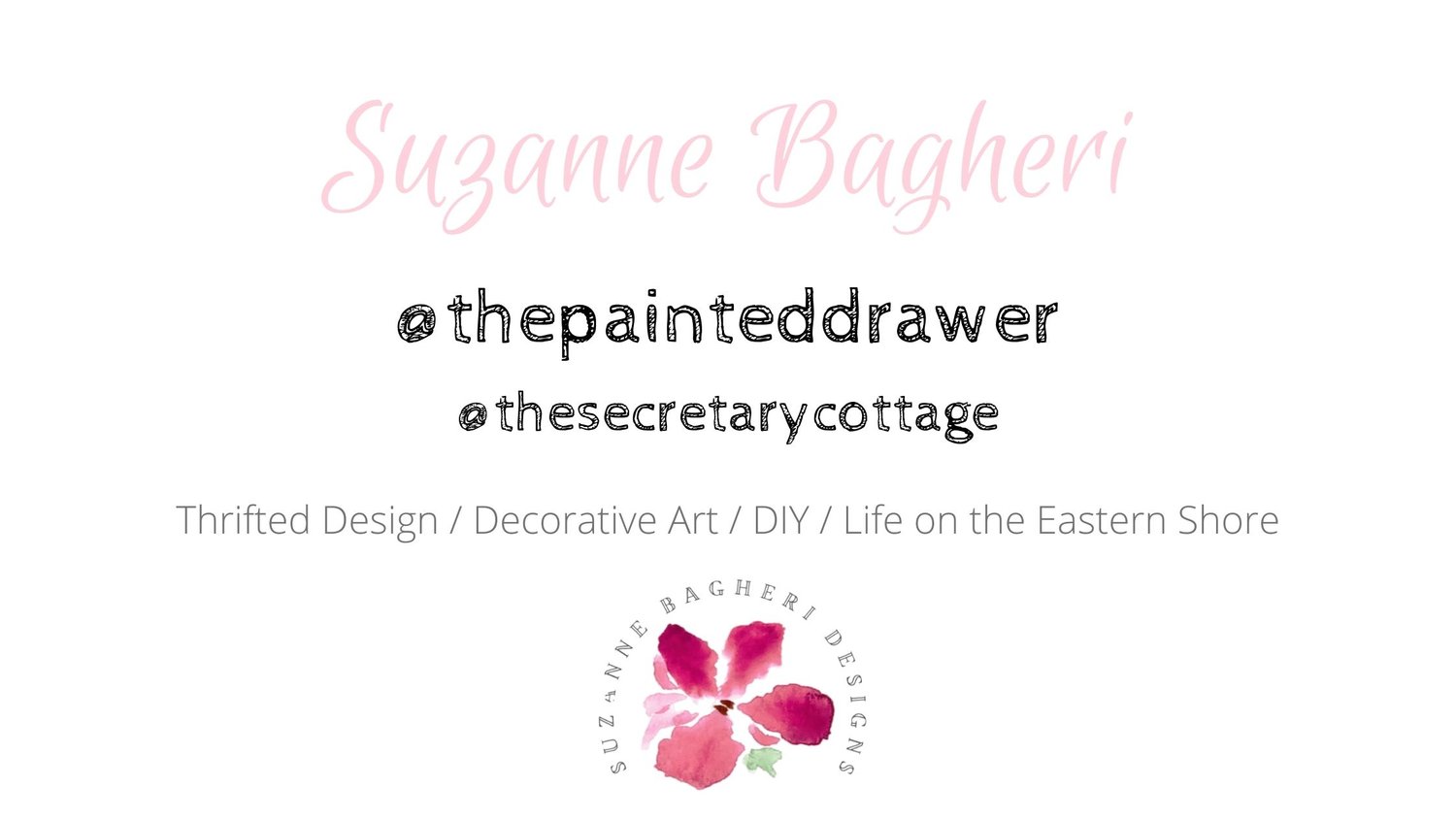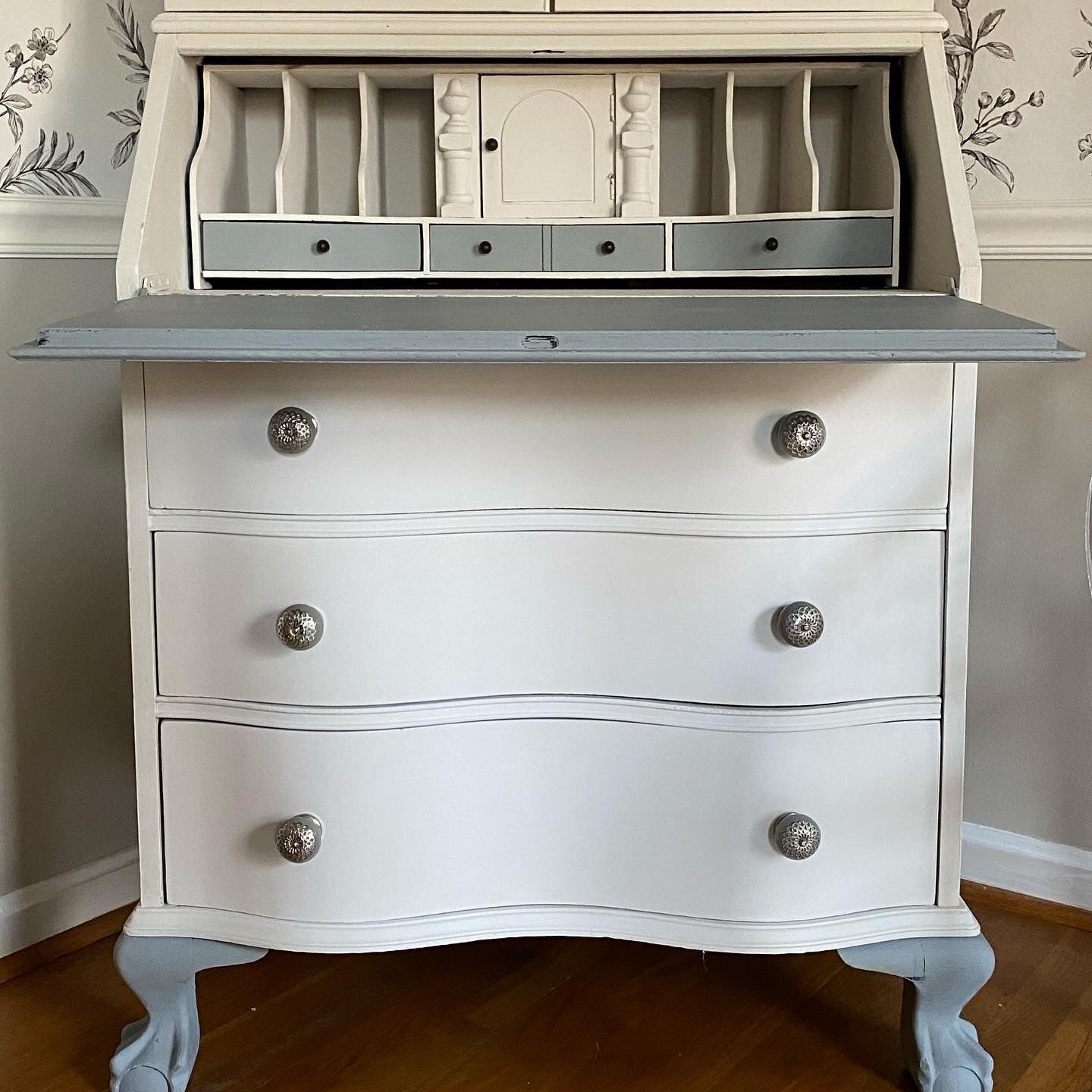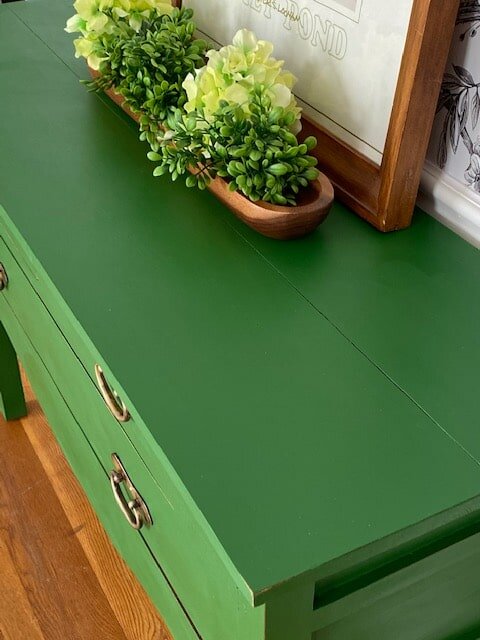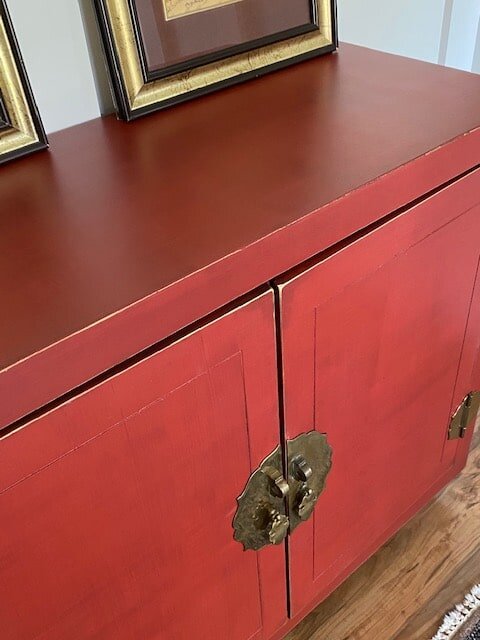CREATE A SMOOTH FINISH WITH CHALK PAINT – NO BRUSH MARKS!
The first in a new series, How To Thursday that incorporates both brand new and updated posts from the archives. Let’s begin with an updated and newly edited post that seems to be a topic of interest to many fellow furniture painters!
I’ve been asked quite a few times to write a post on how to create a smooth finish when using chalk paint (or chalk mineral paint). The steps below will create a super smooth finish without brush strokes! It also creates a hard as nails topcoat. This technique actually works for any type of paint (except only sand the paint if you are using chalk paint).
Here goes!
Wipe piece clean. I typically take a paper towel and go over a piece to get rid of cobwebs, etc. I use a Mr. Clean sponge to get off any stuck on grime, glue or residue. I’m telling you, those sponges are miracle workers!
Wood filler. If a piece is missing any veneer or is deeply scratched, apply wood filler and let dry. Sand off wood filler and repeat the process until surface is smooth. You can use regular wood filler from Home Depot, or try the Dixie Mud. They both will do the job.
Mix your paint. If your chalk paint has been sitting in your workroom for a long period, you may need to add a splash of water (about 2 tablespoons) into the paint and stir.
Apply the paint. Many chalk painters use a round, natural bristle brush to apply the chalk paint in a more haphazard way to create texture and I do enjoy this technique and frankly, chalk paint is perfect for those aged finishes.
However, for a smooth finish, I apply my paint using a synthetic, short handled brush with slanted bristles. For the first coat, work it in back and forth or in different directions to cover but the final pass through needs to be in the same direction. With even strokes, go over the paint stroking in one direction.
Apply the second coat and finish by stroking in the opposite direction from the first coat. It is very important to make sure your paint is not too thick when you apply your second coat. In fact, I like to spray mist my brush with water as I go to keep the paint thin. Use a very light hand with your brush when you go over it in the opposite direction and allow to dry thoroughly before the next step.
Sanding (chalk paints only!). Let dry and go over entire piece with 400 grit sandpaper before applying wax. Again, this is for a super smooth finish! I wrap my sandpaper around a sanding sponge and work it over the piece in a circular motion. It will first create scratch marks but don’t worry. Keep at it until the marks disappear. Note: You will find yourself and your work area covered in chalk paint dust after sanding. I recommend doing the sanding outside and always wear a mask. I actually have a leaf blower that I use to blow off the dust. You can also wipe it off with a very lightly dampened paper towel.
Distress. While sanding, (if desired) distress your piece. You may need to use 150 grit to distress back in places.
Wax (chalk paint finishes). Using clear wax, take either your wax brush (for this process, I use the Dixie Belle La Petit natural bristle brush) or a clean, white old t-shirt or other soft white cloth and apply the wax. Do not use any cloth with color as it will come off onto your piece. I apply my wax in a circular motion. Don’t goop it on – take your time and add section at a time. Dab your brush into the wax, apply and repeat. If applying dark wax, apply it now and wipe off excess using clear wax. Keep at it until desired effect. After the wax has cured for 24 hours, I go back over it with a clean cloth to buff it super smooth.
TIP!
If you are looking for a truly flawless finish, I suggest using the new Silk paint line from Dixie Belle. I used it on a huge china cabinet makeover and it went on as smooth as (you guessed it) Silk!
Again, apply in one direction and then go back over it very lightly with your brush in the opposite direction. You have to do this process very quickly because the Silk paints dry faster than chalk paints. Don’t over brush it or you will end up with the exact opposite of what you want - a ton of brush strokes!







